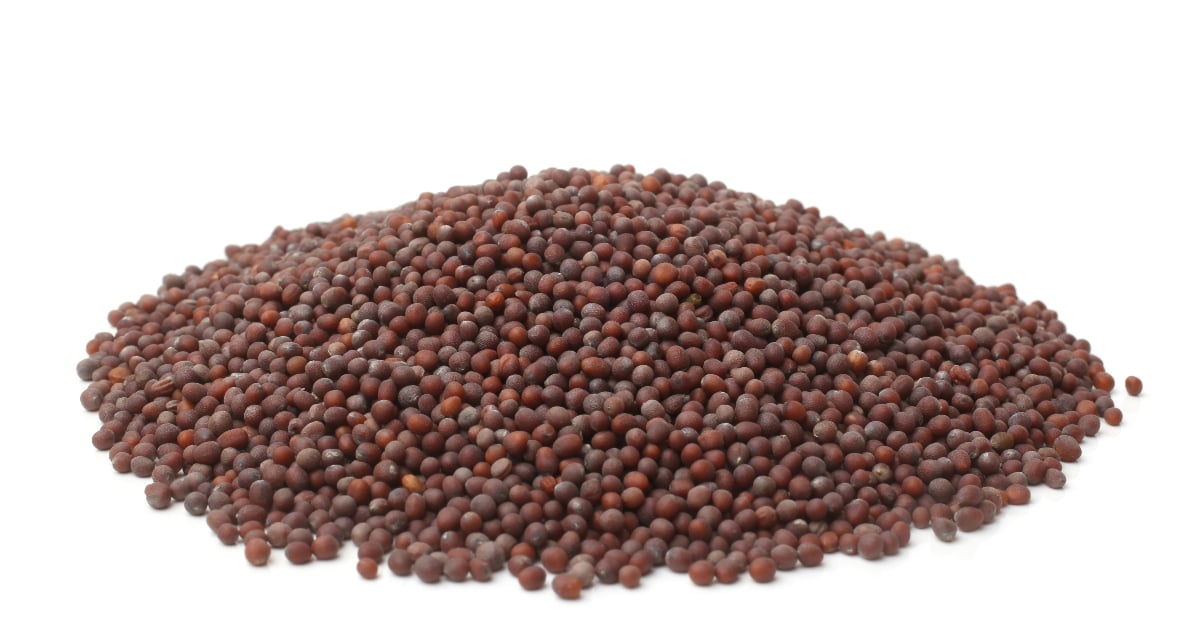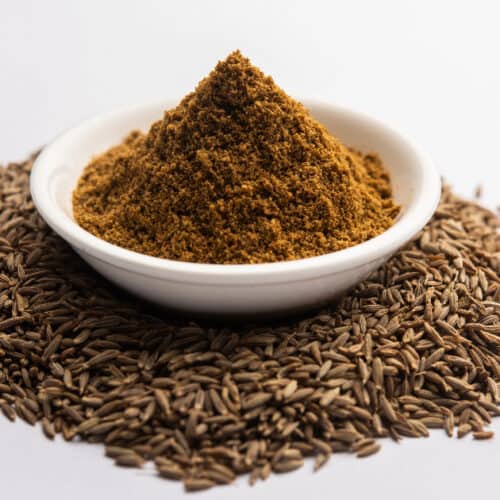Sri Lankan cuisine is known for its fragrant curries that utilize a complex blend of spices.

The distinctive curry powder used in Sri Lankan cooking is key to creating authentic flavors.
Sri Lankan Curry Powder
Sri Lankan curry powder has a rich, dark color and intensive roasted aroma. The preparation involves dry roasting each spice individually before grinding them together into a fine powder. This extra roasting step is what gives Sri Lankan curry its signature smoky essence and deep brown hue.
Compared to Indian curry powder, Sri Lankan blends use more roasted spices like coriander, fennel, cumin, and fenugreek. They also often contain curry leaves, cinnamon, cardamom and cloves. Turmeric is used more sparingly, so the mix isn't as vibrant yellow. The overall flavor profile is intensely savory, with a balanced combination of sweet, spicy, and earthy notes.
This versatile blend can be used to make various curries, stews, marinades, and more. Making your own allows you to control the freshness and customize it to your taste preferences. The ingredients are easy to find at Indian grocery stores or to order online. With simple preparation, you'll have authentic Sri Lankan curry powder on hand anytime.
Ingredients Needed

To make Sri Lankan curry powder, you will need the following key ingredients:
- Coriander seeds - Provides an earthy, aromatic base flavor. Use a generous amount.
- Cumin seeds - Add a strong, slightly bitter taste. Use less cumin than coriander.
- Fennel seeds - Contribute sweet, licorice-like notes.
- Black peppercorns - Brings subtle heat and fruitiness.
- Curry leaves - Optional but provide a fragrant herbaceous aroma.
- Dried red chilies - Use hot Kashmiri or medium-heat chilies for mild to moderate spiciness.
- Fenugreek seeds - Adds savory flavor with a hint of bitterness.
- Cloves, cinnamon, cardamom - Warming spices that round out the flavor complexity.
- Turmeric - Mainly for color rather than flavor. Use sparingly.
- Black mustard seeds - Pungent, nutty accent notes.
- Nutmeg - A little grated nutmeg enhances the sweetness.
Coconut oil or vegetable oil is needed for roasting. Measure out each spice individually so you can control proportions. Adjust amounts to tweak the flavor balance to your preferences.
Dry Roasting Method
What makes Sri Lankan curry powder unique is the lengthy roasting process.
Follow these steps:
Roast spices separately
Dry roast each ingredient individually in a heavy pan over medium-high heat. Constantly stir and toss the spices to prevent burning. The coriander, cumin, and fennel seeds will take 5-10 minutes to reach a deep reddish-brown color. The peppercorns, cloves, cinnamon, and cardamom will take just 2-3 minutes.
Once the spices become fragrant and dark, immediately remove them from heat so they don't burn. Allow them to cool before proceeding.
Roast curry leaves
Heat coconut oil in the pan and add curry leaves. Fry for 2-3 minutes until leaves are crispy. The leaves will impart an intense kaffir lime-like aroma.
Final mixing
Combine all roasted ingredients in the pan and toss together over low heat for another minute or two to allow flavors to mingle. Add the mustard seeds and grated nutmeg.
Grinding
Transfer the mixture to a spice grinder and pulse into a fine powder. A blender or mortar and pestle can also work. Be sure to grind thoroughly so there are no large pieces left.
Storage
Transfer the finished curry powder to an airtight container and store it in a cool, dark place. It will keep for up to 6 months.
Tips for Making Sri Lankan Curry Powder
Follow these tips for the best results when making your own Sri Lankan curry powder:
- Roast spices just until fragrant and slightly smoking, but avoid burning. Burnt spices will taste bitter.
- Let spices cool fully before grinding. Grinding when still hot will cause them to clump together.
- Use whole spices instead of pre-ground for a fresher, more aromatic flavor.
- Store in an airtight container away from heat, light, and moisture to preserve the flavors.
- Make a big batch so you have it on hand whenever you want to whip up a curry.
- Adjust the level of spiciness by using more or less dried red chilies.
- Tweak the proportions of different spices to customize the blend to your taste.
- Substitute any spices you can't find with acceptable alternatives.
With the right technique and ingredients, you can create an authentic-tasting Sri Lankan curry powder to use in a variety of dishes.
Uses for Sri Lankan Curry Powder
This versatile Sri Lankan spice mix can add bold flavor to all kinds of recipes:
Curries
Use it as the base seasoning for Sri Lankan chicken, beef, lamb, seafood, or vegetable curries. It will provide the classic rich, aromatic taste.
Meat and fish
Rub it on meats before grilling or add it to marinades for a flavor boost. It also nicely complements fish like salmon and tilapia.
Vegetables
Sprinkle it on roasted vegetables like cauliflower, squash and potatoes. Toss it with diced veggies for an instant flavor upgrade.
Rice
Stir it into rice pilafs or sprinkle on top of rice-based dishes for extra aroma.
Legumes
Add it to lentil or bean dishes for a savory flavor profile.
Soups and stews
Add it to brothy soups, chowders, and braised meat stews to infuse them with warming spice notes.
Snack foods
Use it to season roasted nuts, homemade crackers, and chips for a spicy kick.
With so many ways to use this versatile powder, your Sri Lankan curry powder will never go to waste!
Recipe for Sri Lankan Curry Powder
Here is a recipe to make about 1 cup of flavorful Sri Lankan curry powder at home:

Sri Lankan Curry Powder
Ingredients
- 1/2 cup coriander seeds
- 1/2 cup cumin seeds
- 1/4 cup fennel seeds
- 2 Tbsp black peppercorns
- 5-10 curry leaves (optional)
- 2 dried red chilies, finely crushed
- 1/2 Tbsp fenugreek seeds
- 3 cloves
- 2 green cardamom pods
- 1 (3-inch) cinnamon stick
- 1 star anise pod
- 1/2 Tbsp black mustard seeds
- 1/4 tsp freshly grated nutmeg
Instructions
- Dry roast spices separately until fragrant and lightly smoking. Let cool completely.
- In oil, fry curry leaves for 2-3 minutes if using.
- Combine all roasted spices. Add mustard seeds and nutmeg.
- Grind mixture into a fine powder using spice grinder or blender.
- Transfer to an airtight container. Store in cool, dry place up to 6 months.
- Use 2-3 Tbsp per recipe to season curries, meats, soups and more.
With this handy recipe, you can quickly make delicious Sri Lankan curry powder at home to use in all your favorite dishes!
FAQs
Should I use whole or ground spices?
Whole spices are preferred because they retain their freshness and flavorful oils better than pre-ground. Start with whole and grind them yourself for the best aroma.
Can I use a regular blender to grind the spices?
Yes, a regular blender will work but may not grind the spices as finely as an electric spice grinder. Make sure to grind in small batches and scrape down the sides often.
How important is it to roast the spices well?
Proper roasting is crucial for full development of flavors. Take the time to roast each one thoroughly over medium-high dry heat while stirring constantly.
What curry powder alternatives can I substitute?
You can use a homemade Madras curry powder or commercial Thai red curry paste in a pinch, but the flavor won't be as authentic.
What is the difference from Indian curry powder?
Indian blends use less roasted spices and more turmeric for vibrant color. They also have higher amounts of cumin, coriander, ginger, and chili.
What kind of chili powder should I use?
Opt for a pure ground chili powder rather than a chili seasoning blend. Kashmiri or medium heat works well. Avoid chili powder with added spices.
Can I leave out any ingredients?
Omitting whole spices will change the flavor profile, but you can adjust the amounts of individual spices to your taste. Leaving out turmeric may alter the color.
Conclusion
With its deep savory flavor and aroma, homemade Sri Lankan curry powder is indispensable for creating the taste of Sri Lankan cuisine. The signature dry roasting method and a blend of spices like coriander, fennel, and cumin produce a mix that can't be replicated by store-bought powders.
With the right ingredients and some practice with roasting and grinding, anyone can learn to make this versatile seasoning.

